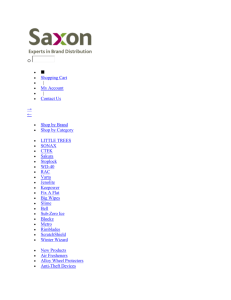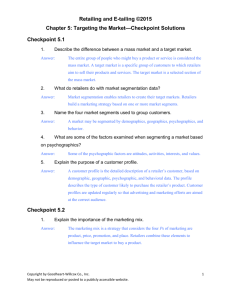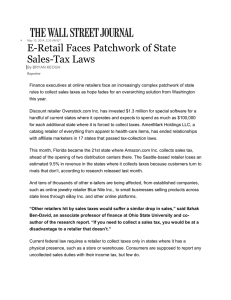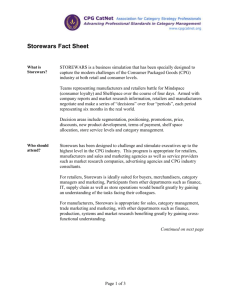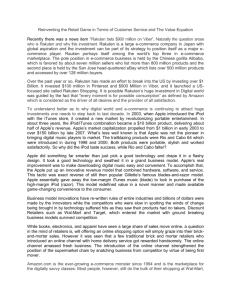Last Mile Home Delivery Increasing Pressure on Service Demands
advertisement
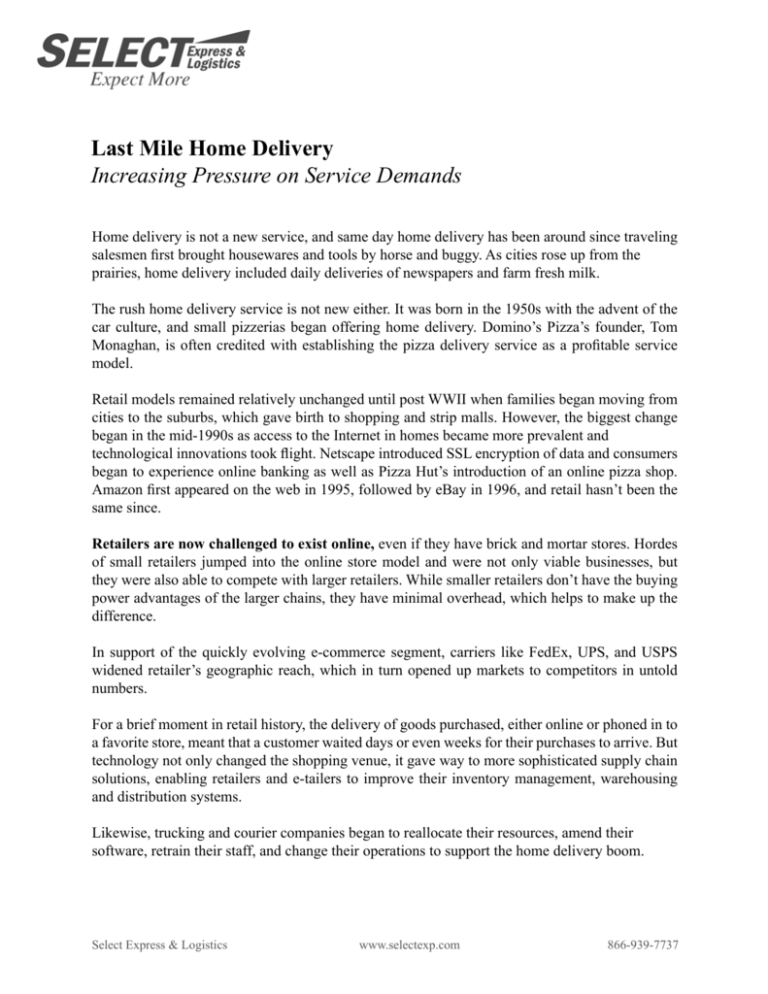
Last Mile Home Delivery Increasing Pressure on Service Demands Home delivery is not a new service, and same day home delivery has been around since traveling salesmen first brought housewares and tools by horse and buggy. As cities rose up from the prairies, home delivery included daily deliveries of newspapers and farm fresh milk. The rush home delivery service is not new either. It was born in the 1950s with the advent of the car culture, and small pizzerias began offering home delivery. Domino’s Pizza’s founder, Tom Monaghan, is often credited with establishing the pizza delivery service as a profitable service model. Retail models remained relatively unchanged until post WWII when families began moving from cities to the suburbs, which gave birth to shopping and strip malls. However, the biggest change began in the mid-1990s as access to the Internet in homes became more prevalent and technological innovations took flight. Netscape introduced SSL encryption of data and consumers began to experience online banking as well as Pizza Hut’s introduction of an online pizza shop. Amazon first appeared on the web in 1995, followed by eBay in 1996, and retail hasn’t been the same since. Retailers are now challenged to exist online, even if they have brick and mortar stores. Hordes of small retailers jumped into the online store model and were not only viable businesses, but they were also able to compete with larger retailers. While smaller retailers don’t have the buying power advantages of the larger chains, they have minimal overhead, which helps to make up the difference. In support of the quickly evolving e-commerce segment, carriers like FedEx, UPS, and USPS widened retailer’s geographic reach, which in turn opened up markets to competitors in untold numbers. For a brief moment in retail history, the delivery of goods purchased, either online or phoned in to a favorite store, meant that a customer waited days or even weeks for their purchases to arrive. But technology not only changed the shopping venue, it gave way to more sophisticated supply chain solutions, enabling retailers and e-tailers to improve their inventory management, warehousing and distribution systems. Likewise, trucking and courier companies began to reallocate their resources, amend their software, retrain their staff, and change their operations to support the home delivery boom. Select Express & Logistics www.selectexp.com 866-939-7737 What consumers are willing to buy online versus in-store has also changed. The on-line retailer Zappos proved that the emotional and tactile glory of shoe shopping could be moved from an instore to an in-home experience. Zappos overcame shoe shopper’s doubts by encouraging them to purchase multiple sizes with a promise of free returns for up to one year from the date of purchase. Not only did Zappos succeed in capturing a large market share – and not on price – but they also nurtured a loyal, outspoken and devoted fan base. CEO and initial investor Tony Hsieh admits that this strategy took time to mature, initially being unprofitable, but it certainly paid off over time. By providing outrageous customer service and free upgrades to premium delivery service, they were able to command higher prices, they grew to a billion dollar a year company, and the rest is, as they say, history. As the Internet continues to become part of the fabric of everyday life, online environments and websites give the consumer a voice, and a very loud voice at that. This has shifted power from the retailer to the consumer. Today’s consumer is armed with instant access to online rating services such as Yelp and Epinions, powerful database searches for comprehensive product and price comparisons and instant connectivity to friends and colleagues en-masse for obtaining recommendations -- known as social shopping. All of these factors contribute to making this the era of the most well-informed consumer base in retail history. Consumer’s expectations of delivery and service now play into the mix of purchasing decisions. Retailers and e-tailers are continually challenged to explore mechanisms and behaviors to differentiate themselves in the marketplace on more than price. With major players such as Amazon, Best Buy, and The Home Depot doing logistical somersaults to fast-track and customize delivery options, “sometime next week” is no longer acceptable, and neither is asking the consumer to be home from 9:00 am to 2:00 pm to accept delivery. No longer are consumers accepting of standard terms of service previously set by retailers and e-tailers hampered with limited and outdated logistical solutions. Same day delivery is a Recognizing that same day needs to be a part of a retail battleground where all B2C delivery strategy, retailer behemoth Wal-Mart has gone companies will be expected to head-to-head with Amazon. While Amazon has been offering compete. low cost, same day delivery in several markets since 2009, Wal-Mart began testing same day delivery for online orders in major markets during the 2012 holiday season. Additionally, eBay began offering same day services in major markets partnering with Macy’s, Target, Office Depot, and other major retailers. Each of these major players has a different logistics model. While Amazon relies on their distribution centers, Wal-Mart uses their stores as their distribution center, and eBay engages ‘valets’ to pick up and deliver. Select Express & Logistics www.selectexp.com 866-939-7737 2 Retailers already had the ability to deliver goods that could not be carried out of the store by the consumer, such as refrigerators, swing sets, and larger household items requiring truck delivery. Today, however, there is a growing trend toward convenience deliveries, ranging from a cup cake order to bedding purchased on a customer’s way to picking the kids up from soccer practice. ‘Buy it and build it’ isn’t always a customer’s preference. As consumers have increased demands on their time, this leaves less time to devote to constructing furniture, entertainment centers, swing sets, or any number of items that require assembly. Today’s retailer must be ready to provide the skilled manpower to act as the favored handyman as well as the courteous driver. To make up for retailer’s inability to provide same day delivery or assembly and installation services, tech savvy consumers turn to websites such as TaskRabbit and Craigslist to solicit valet and handyman services from an army of eager masses. This new grouping of service providers is a stopgap solution until retailers and e-tailers catch up, or risk losing customers to their competitors who have developed their own logistical solutions, or partnered with a third party last-mile provider. Consumers will opt to shop with retailers who provide a full customized range of services for the convenience of a single source solution over having to shop not just for their goods but also for their delivery and assembly services. Customers want control and options – real options that put them in control of their demanding and hectic lifestyles. They want the ability to pick the day and the time of the delivery as well as the level of service. Delivery options now need to be better than a window of times preset by the retailer with limitations in scope. They need to be flexible including same, next, or any day options with a mutually agreeable window of time that does not require the customer to wait for hours on end for a truck to arrive. Regardless of the logistics model, in-house or outsourced, as far as the customer is concerned, the home/office delivery experience is perceived as part of the overall shopping experience. Customers expect to be called or to receive a text message confirming delivery and providing updates of ETA (estimated time of arrival.) Uniformed, polite, skilled, and conscientious ‘strangers’ enter the customer’s home to complete the sale, which makes them the last touch of the brand. This is a moment of truth for any retailer and determines the final sentiment that a customer develops – and more than likely will share their experience with their online communities. Select Express & Logistics www.selectexp.com 866-939-7737 3 Standard Service Levels STORE-TO-DOOR Including distribution center to customer’s door. The delivery person delivers packages to the customer’s door and, if required, obtains a signature. THRESHOLD SERVICE The courier enters the home or office and places the product in the first dry spot. ROOM OF CHOICE The courier enters the home or office and places the product in the room of choice – a sure-to-be-appreciated service, especially in the case of bulky items such as appliances, furniture, and the like. WHITE GLOVE SERVICE Goes beyond Room of Choice Service by placing the items as directed and includes unwrapping packing material and removing the packing debris from the site. This level of service might also include removal of the item being replaced such as a mattress or even a refrigerator or washing machine. WHITE GLOVE ASSEMBLY This is the “last inch” of last mile service. While this level of service includes the performance of White Glove as noted above, it also includes the product assembly and installation. The customer doesn’t have to lift a tool or a finger. The white glove team might even spend a few minutes going over basic operating instructions with the customer. While premium service provided at this level might well be expected, it can also command a premium price – for this “ready-to-use” service – and has the potential to become a profit center. 55 West 39th Street, 15th Floor New York, NY 10018 866-939-7737 Select Express & Logistics www.selectexp.com 866-939-7737 4


